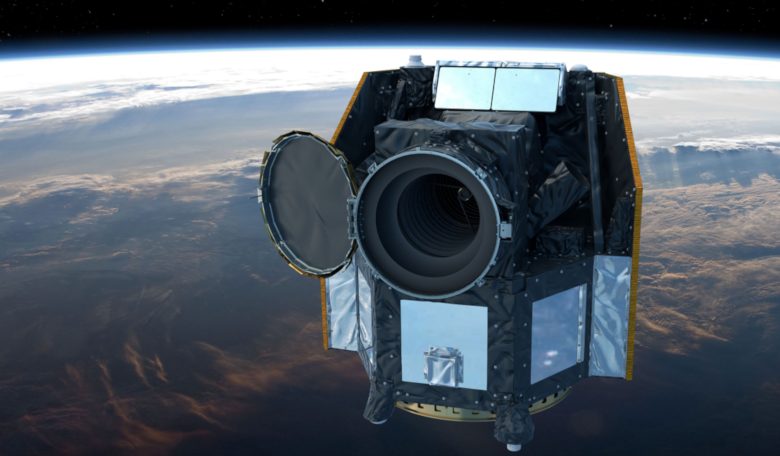Set to blast off tomorrow on a Soyuz-Fregat rocket from Europe’s Spaceport in Kourou, French Guiana, at 09:54 CET is ESA’s first mission dedicated to studying bright, nearby stars that are already known to host exoplanets; Cheops, which stands for CHaracterising ExOPlanet Satellite.
Cheops is therefore not on a discovery mission but rather a follow-up programme, to uncover precise size measurements of these already identified exoworlds which range from super-Earth to Neptune-sized planets.
The planet watcher will make these high-precision observations by measuring the minuscule brightness changes as the alien world passes in front of their host star; a technique known as the Transit method - a highly successful method that has helped discover nearly 3000 of the 4143+ exoplanets found so far.
Cheops will be able to measure the ‘depth’ of the transit I.e the size of the dip in the light due to the exoplanet transit to the level of a few tens of parts per million (ppm) and it can take these details around once per minute.
Armed with information on a planets size, scientists then just need data on its mass to determine its density. Densities are key to understanding what type of world these far-off planets are, as it indicates whether they are gas giants, smaller rocky worlds or perhaps harbouring an ocean for example.
“By measuring the radius and by knowing the mass through radial velocity, we can place these different planets and try to figure out what they’re made of,” said Willy Benz, the mission’s principal investigator from the University of Bern in Switzerland.
“You need to have pretty small error bars if you want to say anything meaningful about this, and this is why we need precision measurements.”
The squat looking telescope will also identify the best candidates for future detailed studies by up and coming observatories such as the James Webb Space Telescope (JWST). Hubble's successor, JWST, will be NASA's premier observatory of the next decade, and will serve thousands of astronomers across many disciplines. It will be used to search for, amongst many other things, the signatures of water and methane and other important elements in the quest for habitable words.
“We want to look at atmospheres, following planets in their orbits around the star, we may want to see if a planet has moons, rings, and so on, and we want to provide the best targets for the very large facilities under construction or going into orbit like JWST,” Benz said.
Unlike JWST, which is edging towards a total cost of near $10 billion for the project, Cheops is a small, or S-class, mission in ESA’s science programme. S-class missions have a much shorter time from project start to launch and also much smaller budgets than large- and medium-class missions; as such the budget for CHEOPS barely rose above the 100 million-euro ($110 million) mark.
Not only was it small on costs, it is small in stature. The space telescope stands at just 1.5 metres (4.9 feet) tall, stretches 1.6 metres (5.2 feet) wide, and weighs 273 kilograms.
The squat and unusual-looking satellite is also highly decorative. Lining the sides of the craft are nearly three thousand drawings, submitted by thousands of children as part of especially held competitions designed to engage and inspire the next generation.
The pictures include everything from our own Solar System, starry skies and astronauts, to imaginative illustrations of stars and extrasolar worlds and have been shrunk by a factor of 1000 so that they can be engraved on two 18 x 24 cm titanium plates attached to the satellite.
The hardware might be small, but the mission is big on ambition however. Aside from helping to refine the characteristics of 300 pre-selected targets during its three-and-a-half-year primary mission, the detailed information it collates will help astronomers improve their models of the formation and evolution of small planets, with potential implications for our understanding of the evolution of our own Solar System.
“CHEOPS will provide us with key information to understand the structure of small planets, and how they form and evolve. This will be an essential step in a worldwide endeavor … to search for exoplanets like our own Earth,” said Kate Isaak, CHEOPS project scientist at ESA.
“It follows on from CoRoT, from Kepler and from TESS, and it’s the first in a series of three missions from ESA that are dedicated to exoplanet science,” Isaak said.
Those other missions include Plato, that is aimed at studying terrestrial planets in orbits up to the habitable zone of Sun-like stars, and Ariel. Scheduled for launch around 2028, Ariel will be the first mission dedicated to measuring the chemical composition and thermal structures of a large and diverse sample of exoplanets.
For now though, all eyes will be on Cheops tomorrow as it heads for a dawn/dusk orbit at an altitude of 700 kilometres. Also hitching a ride on the Soyuz-Fregat launcher will be the first satellite of the Italian space agency ASI’s Cosmo-SkyMed Second Generation constellation, along with three ‘CubeSats’, including ESA’s OPS-SAT – the world’s first free-for-use, in-orbit testbed for new software, applications and techniques in satellite control.
ESA will be streaming the event live, so if you want to watch the lift-off, click here: https://www.esa.int/ESA_Multimedia/ESA_Web_TV











